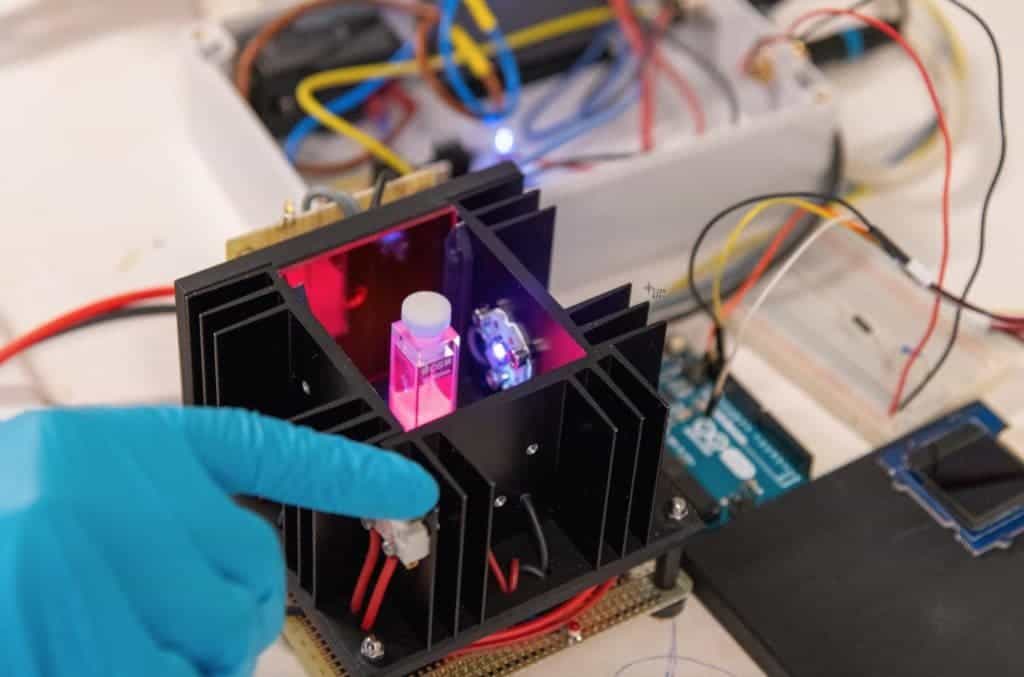For all the improvements to our living standards, we’re still heavily dependent on one particular resource: water. Without clean water at our convenience, life would be considerably much harder. Ensuring that the water is truly clean, however, is not always all that easy. Now, a new study describes an innovative test system that detects fluoride contamination cheaply and effectively.

The prototype device used with SION-105 to detect fluoride anions in drinking water. Image credits: Marie-Thé and Etienne Roux.
Adding fluoride to water is a common practice, widespread throughout the world. Unlike chlorine, which is added for the purpose of killing pathogens and preventing waterborne bacteria, fluoridated water is effective for preventing cavities, but when the overall quantity increases too much (typically over 1.5 mg/L) it can have an opposite effect.
Assessing the exact amount of fluoride in the water is no easy feat, however. As a result, several countries in the developing world are being affected by water fluoride contamination. This is where the new device enters the stage.
“To determine whether drinking water is safe we need to detect fluoride in water at the level of parts-per-million (ppm),” says Kyriakos Stylianou at the Laboratory of molecular simulation at EPFL Valais Wallis. “Around 1-1.5 ppm is good for teeth, but in many countries the water sources have concentrations above 2 ppm can cause serious health issues.”
[panel style=”panel-info” title=”Hard vs Soft water” footer=””]Fluoride has nothing to do with so-called hard or soft water. Soft water contains low concentrations of calcium and magnesium and is chosen by some people as a personal preference. [/panel]
The key is a novel material synthesized by scientists. The material is a “metal-organic framework” — a family of compounds made of metal ions connected to organic ligands. MOFs, as they are often called, are increasingly being used in a long list of chemical applications such as separating petrochemicals or detoxing water.
The device is called SION-105, and it’s luminescent by default. However, when it comes into contact with fluoride ions, it darkens.
“Add a few droplets of water and by monitoring the color change of the MOF one can say whether it is safe to drink the water or not,” explains Mish Ebrahim, the paper’s first author. “This can now be done on-site, without any chemical expertise.”
The device has been tested in different groundwater samples from Vietnam, the United Arab Emirates, and Saudi Arabia. SION-105’s results were similar to those obtained from ion chromatography, a very precise but more expensive technique.
Researchers have now applied for a patent for the device.
The study has been published in the Journal of American Chemical Society.









